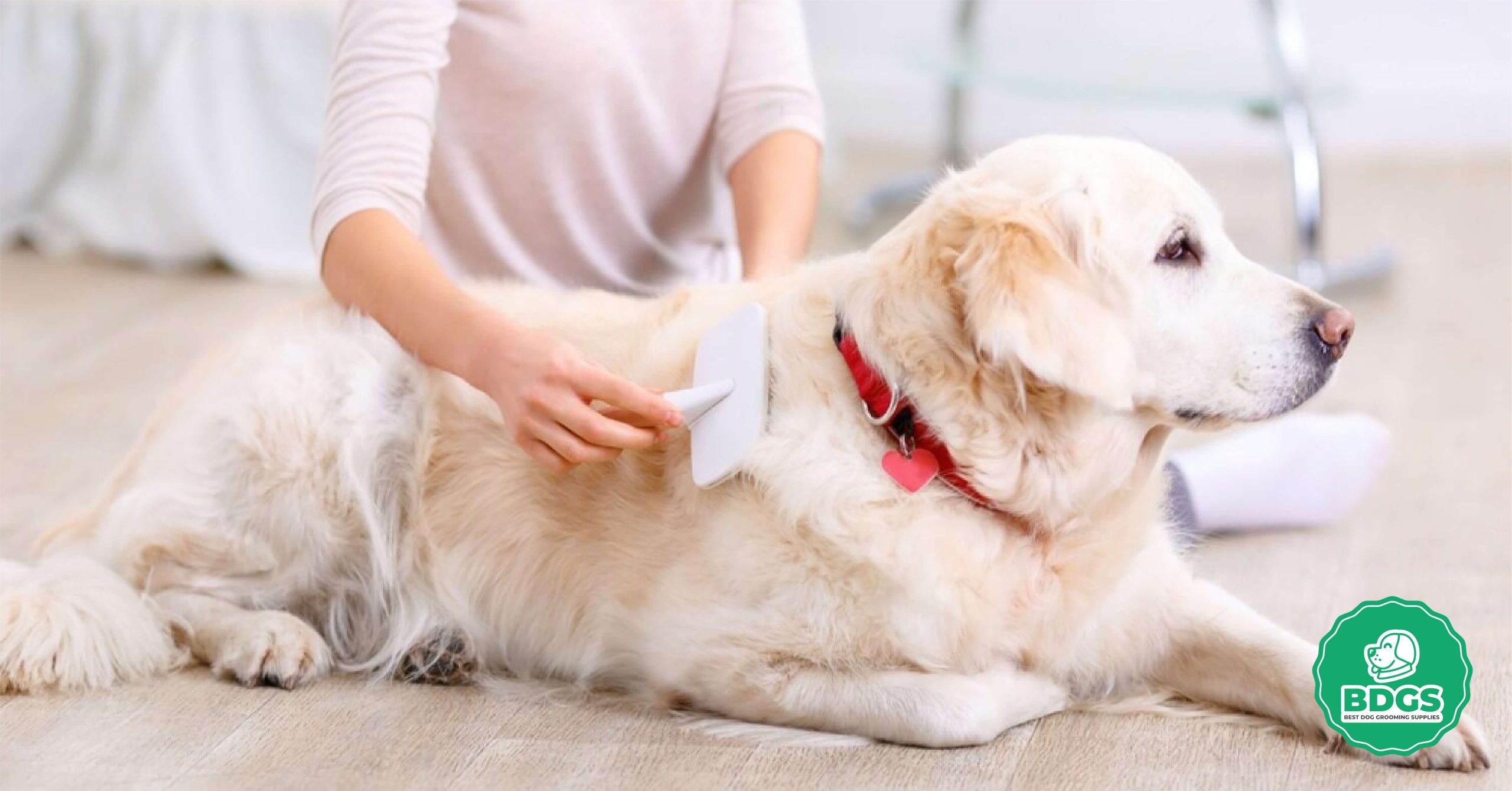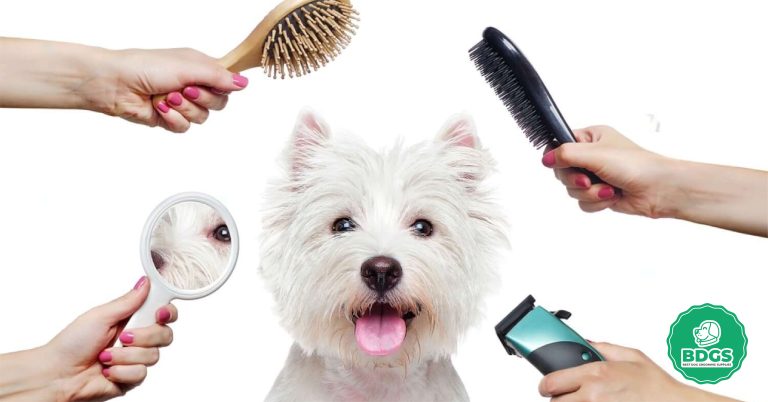Introduction:
A dog brush is more than just cleaning your dog’s coat. It’s the key to a world of healthy hair and fun times with your dog friend. To care for our pet friends, we must do more than just cuddle and play with them. Grooming your dog regularly, mainly cleaning their hair, is important for their health and well-being. In this guide, we’ll talk about how important it is to brush your dog and show you step-by-step how to do it right. We have what you need for your dog, whether it has long or short hair.
Benefits of Brushing Your Dog’s Coat:
Removing Dead Hair and Preventing Mats:
By brushing your dog’s coat often, you can eliminate free fur and reduce the amount of hair all over your house. By removing dead hair, you also keep your dog from getting annoying mats and knots that can be painful.
Distributing Natural Oils Throughout the Coat:
Brushing helps spread the oils your dog’s skin makes, keeping their hair healthy and shiny. This process makes them look better and keeps their skin from getting dry or irritated.
Stimulating the Skin and Promoting Circulation:
When you brush your dog, you stimulate the skin, which makes the blood move better. When circulation improves, the skin is healthy, and the hair is less likely to get dry and flaky.
Understanding Different Types of Dog Brush and Coats:
Types of dog coats:
- Short-Haired Coats: These coats are smooth and close to the skin. Short-haired dogs include beagles and boxers.
- Long-Haired Coats: As the name says, these coats are long and flowy. Dogs with long hair include Afghan hounds and Maltese.
- Double-Coated Coats: These coats have two layers: a soft lining and a rougher top coat. Siberian huskies and Golden Retrievers are two examples.
Types of dog brushes:
- Bristle Brushes: Bristle brushes are great for removing loose hair and dirt from short-haired dogs and for general cleaning.
- Slicker Brushes: Slicker brushes can be used on both long- and short-haired dogs to remove mats and knots.
- Undercoat Rakes: Undercoat rakes remove loose undercoat hair well and are best for double-coated breeds.
- Rubber Brushes: Rubber brushes are a great way to massage your dog’s skin and remove loose dirt and hair.
The Importance of Brushing Your Dog’s Teeth and Ears:
- Dental Care: It’s essential to brush your dog’s teeth to avoid dental problems like buildup of plaque and tartar, gum disease, and a bad smell. Use a toothbrush and toothpaste made just for dogs to care for your dog’s teeth.
- Ear Care: Ear infections can be avoided by checking and cleaning your dog’s ears often. Use a cotton ball and an ear cleaner. Your vet recommends cleaning the outside of the ears gently.
Causes of Mats and Tangles in Your Dog’s Coat:
Many things can cause mats and knots in your dog’s coat, such as:
- Lack of Regular Brushing: If you don’t brush your dog often enough, stray hair can stick together and cause mats.
- Moisture and Dirt: If wet and dirty fur is left alone, it can get knotted and form mats.
- Shedding: Dogs with undercoats are more likely to shed, and if this free hair isn’t cleaned out, it can get knotted.
Symptoms That Indicate Your Dog Needs Brushing:
- Excessive Shedding: If your furniture or clothes have a lot of dog hair, it’s time to brush your dog.
- Unruly Coat: A coat that looks messed up and tangled must be fixed immediately.
- Scratching and Irritation: If your dog has mats or knots in their fur, they may scratch or bite at it. It is a sign that they need to be brushed.
How to Brush Your Dog’s Coat Properly:
- Gather the Right Tools: Choose a brush for your dog based on what kind of hair it has. For example, use a slicker brush on mats and a bristle brush on breeds with short hair.
- Create a Positive Experience: You can make brushing your dog fun and good by giving treats and compliments.
- Start Gently: To avoid making your dog feel bad, brush its hair at the base and work your way out.
- Brush in the Direction of Hair Growth: Brushing in the same direction as the hair growth helps your dog feel more at ease and gets rid of loose hair more effectively.
- Be Gentle Around Sensitive Areas: Be careful around your dog’s ears, eyes, and belly, which are more sensitive.
Tips for Dealing with Mats and Tangles:
- Use Detangler Spray: If you have mats that won’t come loose, a detangler spray can help.
- Work Slowly: Take your time cleaning mats to avoid making your dog feel bad.
- Consider Professional Grooming: Hiring a professional groomer is a good idea if the mats are bad.
Importance of Regular Brushing and Prevention:
- Prevention is Key: The best way to avoid mats, tangles, and other problems with the coat is to brush it regularly.
- Start Early: Start brushing your dog when they are young, so they are used to it.
- Schedule Regular Grooming Sessions: Set up a grooming schedule based on your dog’s coat type and needs.
Conclusion:
When you brush your dog’s hair, you show them love and care beyond how they look. It is essential to their health and well-being as a whole. By knowing the type of coat your dog has, getting the right brush, and brushing it the right way, you can keep your dog’s coat healthy, shiny, and free of mats and tangles.
Remember that regularly brushing your dog helps you build a strong relationship with him, which is good for both of you. Why then wait? Grab your brushes and start cleaning your dog so you can live long, healthy lives.
Frequently Asked Questions
The proper way to brush a dog involves the following steps:
a) Gather the right tools: Choose the right brush for your dog’s coat type, such as a slicker brush for mats and a bristle brush for short-haired breeds.
b) Create a positive experience: Give your dog treats and praise to make brushing an excellent and fun time for them.
c) Start gently: To avoid hurting your dog, brush at the base of its hair and work your way out.
d) Brush in the direction of hair growth: Brushing in the direction of hair growth is more comfortable for your dog and gets rid of free hair better.
e) Be gentle around sensitive areas: Your dog’s ears, eyes, and belly are more sensitive, so be extra careful around them.
The frequency of brushing your dog’s fur depends on their coat type:
a) Short-Haired Coats: These dogs usually need to be brushed once a week to get rid of loose hair and keep their coats looking neat.
b) Long-Haired Coats: Dogs with long hair should be brushed more often, at least twice or three times a week, to keep them from getting mats and knots.
c) Double-Coated Coats: Breeds with thick fur, like Huskies and Golden Retrievers, need to be brushed more often, especially when they are shedding.
Your dog’s hair is easiest to brush when it is dry. If you brush your pet’s hair when wet, you might make more tangles and make your pet feel bad. If your dog’s hair is matted or knotted, use a detangling spray or conditioner to make it easier to brush it. Make sure the hair is mostly dry before you do this, though.
If brushing your dog is something they don’t like, try these things to make it more fun:
a) Gradual Introduction: Start slowly and softly, and don’t use pressure with the brush. It will help your dog get used to it. Give treats and compliments to make people think of good things.
b) Short Sessions: At first, keep the brushing sessions short. As your dog gets used to it, you can gradually lengthen them.
c) Use positive reinforcement: Reward your dog with treats and direct praise throughout brushing to get him to work with you.
d) Distractions: Give your dog a favorite toy or a treat puzzle to keep them busy while you brush.
e) Get Help from a Professional: If your dog still dislikes being brushed, hire a professional groomer who can do the job better.
Remember that a dog that doesn’t like being brushed needs great care and encouragement. Many dogs can learn to accept or enjoy cleaning with time, kindness, and regularity.







